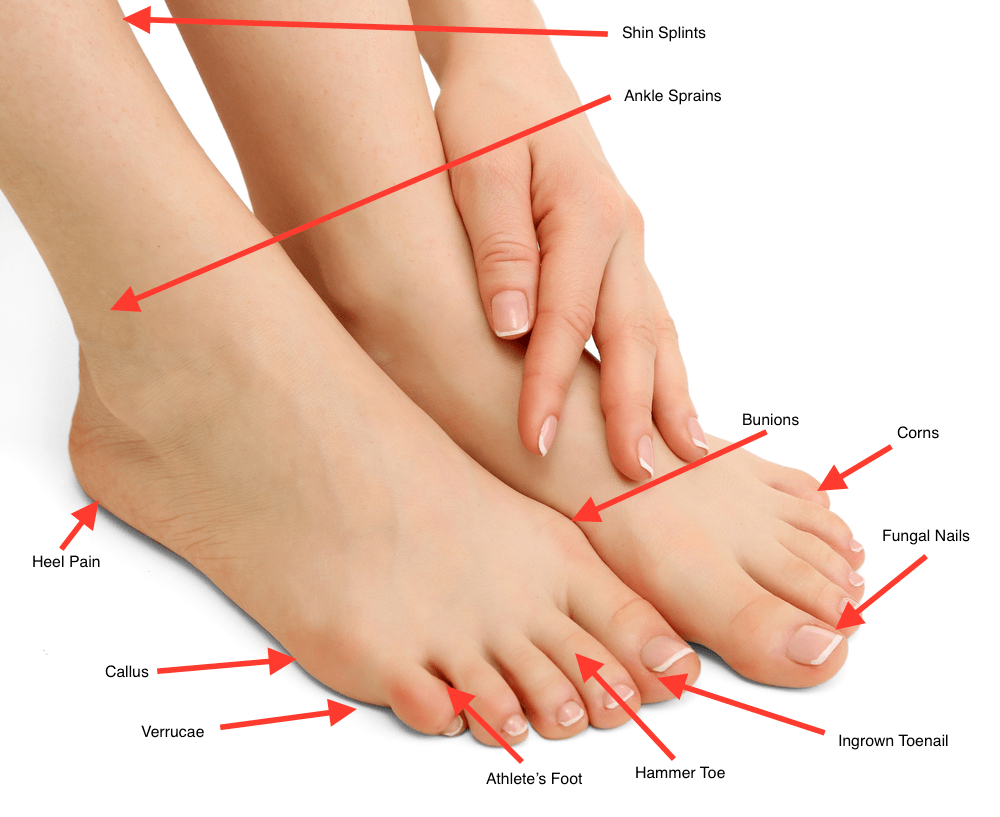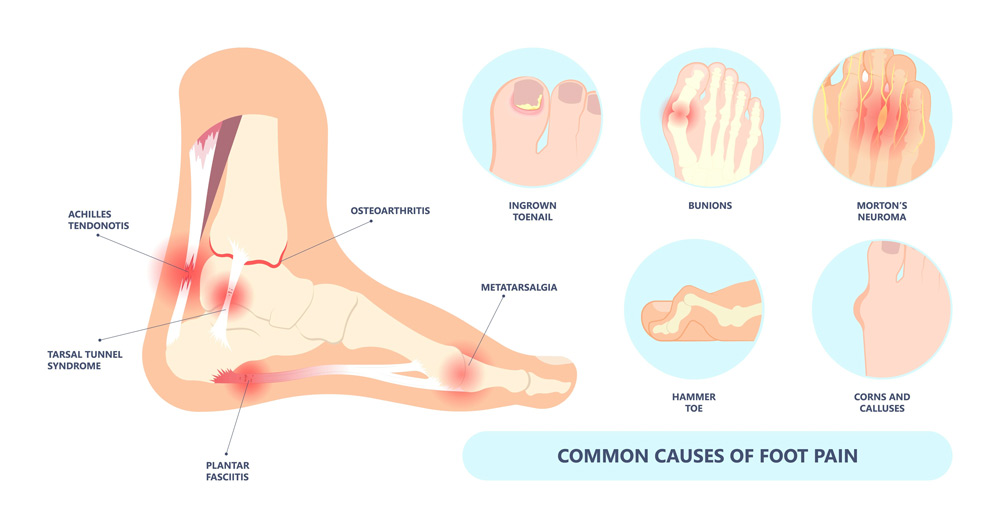Common Foot Problems: Ultimate Guide 2025
Discover how the right foot creams effectively manage dry, cracked heels, athlete’s foot, and diabetic neuropathy. Common foot problems and their solution’s
Have you ever wondered why your feet feel dry, cracked, or uncomfortable? I’ve been there, and I’ve discovered that foot creams can be a game-changer in managing various foot conditions. From athlete’s foot to diabetic neuropathy, these specialized creams play a crucial role in maintaining healthy feet.
As someone who’s struggled with foot issues, I’ve learned that the right foot cream can make all the difference. These products are specifically formulated to address common foot problems, providing relief and promoting overall foot health. In this text, I’ll explore how foot creams can help manage exact conditions, what ingredients to look for, and how to choose the best cream for your needs.
Understanding Common Foot Problems and the Role of Specialized Creams
Managing Dry and Cracked Heels
Dry and cracked heels are common foot conditions that require targeted treatment. Specialized foot creams play a crucial role in addressing these issues effectively.
Role of Foot Creams
Foot creams with exact ingredients are essential for managing dry and cracked heels:
- Urea Cream (40%): Highly effective for severe dryness and cracking
- Apply at bedtime after bathing
- Use with airtight socks for enhanced hydration
- Urea Cream (20%): Ideal for daily maintenance
- Apply after baths or showers
- Prevents recurrence of dry skin
- Ammonium Lactate Lotion (12%): Suitable for mild dryness
- Less potent than urea
- Effective for regular use
Managing Diabetic Foot Conditions
Diabetes can lead to serious foot complications, making proper foot care crucial for affected individuals.
Role of Diabetic Foot Creams
Specialized creams for diabetic feet address unique challenges:
- Moisturizing Properties: Combat dryness caused by reduced sweat gland function
- Circulation Enhancement: Ingredients that promote blood flow
- Neuropathy Support: Formulas designed to soothe nerve-related discomfort
- Infection Prevention: Antimicrobial components to reduce infection risk
By using these specialized creams, I’ve found that managing exact foot conditions becomes more effective and targeted. The right cream can make a important difference in foot health and comfort.
Types of Foot Creams for Specific Conditions
Foot creams play a crucial role in managing various foot conditions. I’ll explore three exact types of foot creams designed to address common issues: dry and cracked heels, athlete’s foot, and diabetic foot care.
Moisturizing Creams for Dry and Cracked Heels
Moisturizing creams are essential for treating dry and cracked heels. Key ingredients in effective moisturizers include urea, glycerin, and hyaluronic acid. Urea, particularly in 40% concentration, is highly effective for severely dry skin and fissures. I recommend applying the cream after bathing and gently rubbing it until fully absorbed. For severe cases, an overnight airtight soak can enhance hydration. Once the skin improves, switch to a 20% urea cream for daily maintenance to prevent recurrence.
Antifungal Creams for Athlete’s Foot
Antifungal creams are the go-to treatment for athlete’s foot. These creams contain active ingredients like terbinafine, miconazole, or clotrimazole, which target and eliminate the fungus causing the infection. I suggest applying the cream to clean, dry feet, paying special attention to areas between the toes. Treatment typically lasts 1-2 weeks, but it’s crucial to continue application for a few days after symptoms disappear to prevent recurrence. Some antifungal creams also contain moisturizing agents to soothe irritated skin.
Diabetic Foot Creams
Diabetic foot creams are specially formulated to address the unique needs of individuals with diabetes. These creams focus on intense moisturization without causing skin maceration, which can lead to infections. I recommend looking for creams containing urea, alpha-hydroxy acids, and vitamins A, C, and E.
These ingredients help improve skin elasticity, promote healing, and provide antioxidant protection. Diabetic foot creams often have a non-greasy formula for easy absorption and may include antimicrobial agents to prevent infections. Regular use can help maintain healthy skin and reduce the risk of diabetic foot complications.

Key Ingredients in Effective Foot Creams
Effective foot creams contain exact ingredients customized to address various foot conditions. These key components work together to moisturize, protect, and heal the skin on your feet.
Moisturizing Agents
Moisturizing agents are essential for combating dry and cracked heels. Urea, a potent humectant, is highly effective in foot creams. A 40% urea concentration helps penetrate thick skin and dissolve calluses, while a 20% concentration is suitable for maintenance.
Glycerin and hyaluronic acid provide deep hydration, maintaining proper skin moisture levels. These ingredients are particularly beneficial for diabetic foot care. Lanolin, often found in diabetic foot creams, offers deep hydration without leaving a greasy residue.
Antifungal Components
Antifungal ingredients are crucial for treating conditions like athlete’s foot. Terbinafine, clotrimazole, and tolnaftate are common active ingredients in antifungal foot creams. These components work by targeting and eliminating fungal infections. Terbinafine is particularly effective against dermatophytes, the fungi responsible for athlete’s foot.
Clotrimazole offers broad-spectrum antifungal activity, while tolnaftate prevents fungal growth. When using antifungal creams, it’s important to apply them consistently and for the recommended duration to prevent recurrence.
Skin-Protective Ingredients
Skin-protective ingredients in foot creams help maintain the skin’s barrier function and promote healing. Vitamins A and E are powerful antioxidants that protect skin cells from damage and support skin regeneration. Aloe vera provides soothing and anti-inflammatory properties, reducing irritation and redness.
Shea butter creates a protective barrier on the skin, locking in moisture and promoting skin elasticity. These ingredients work synergistically to nourish and protect the skin on your feet, helping to prevent further damage and promote overall foot health.
Applying Foot Creams Correctly
Proper application of foot creams is crucial for their effectiveness in managing exact foot conditions. I’ll outline the essential steps and techniques to ensure you get the most out of your foot cream treatment.
Preparation and Application Techniques
To maximize the benefits of foot creams, I recommend following these steps:
- Wash feet thoroughly with warm water and mild soap
- Pat dry completely, paying extra attention between toes
- Gently exfoliate dead skin using a pumice stone or foot file
- Apply a small amount of cream to clean, dry feet
- Massage the cream in circular motions, focusing on problem areas
- Pay special attention to heels, soles, and between toes
- Use light pressure to ensure full absorption
- Allow cream to absorb fully before putting on socks or shoes
For antifungal creams, I suggest applying directly to affected areas and surrounding skin. For diabetic foot care, be extra gentle and avoid applying between toes to prevent moisture buildup.

Frequency and Duration of Use
The frequency and duration of foot cream application depend on the exact condition and product:
- For general moisturizing: Apply once or twice daily, typically morning and night
- For athlete’s foot: Follow product instructions, usually 1-2 times daily for 2-4 weeks
- For diabetic foot care: Apply 1-2 times daily, or as recommended by a healthcare provider
- For severe dryness or cracked heels: Apply 2-3 times daily until improvement, then reduce to maintenance frequency
Consistency is key for optimal results. I advise continuing use even after symptoms improve to prevent recurrence. For chronic conditions, long-term use may be necessary. Always consult a healthcare professional for personalized advice on treatment duration.
Complementary Foot Care Practices
Effective foot care extends beyond just using creams. Incorporating complementary practices enhances overall foot health and maximizes the benefits of foot creams.
Proper Foot Hygiene
Maintaining proper foot hygiene is crucial for healthy feet. I wash my feet daily with mild soap and warm water, paying extra attention to areas between the toes. After washing, I dry my feet thoroughly, especially between the toes, to prevent moisture buildup that can lead to fungal infections.
Regularly trimming toenails straight across helps prevent ingrown nails. I exfoliate my feet weekly using a pumice stone or foot scrub to remove dead skin, which allows foot creams to penetrate more effectively. Changing socks daily and using antifungal powder in shoes keeps feet fresh and dry.
Choosing Appropriate Footwear
Selecting the right footwear significantly impacts foot health. I opt for shoes that provide adequate support and fit properly, with about a half-inch of space between my longest toe and the shoe’s end. Breathable materials like leather or mesh allow air circulation, reducing moisture buildup.
For athletic activities, I choose shoes designed for the exact sport to ensure proper support and cushioning. Wide toe boxes prevent crowding and reduce the risk of corns and calluses. I avoid high heels for extended periods as they can lead to foot strain and deformities. Alternating shoes daily allows them to dry out completely, preventing bacterial growth.
When to Consult a Podiatrist
While foot creams can effectively manage many common foot conditions, there are instances when professional medical advice is necessary. Knowing when to seek help from a podiatrist is crucial for maintaining optimal foot health and preventing complications.
Signs of Worsening Conditions
I’ve learned that certain symptoms indicate a need for professional intervention. Persistent pain, swelling, or redness that doesn’t improve with over-the-counter treatments are red flags. Diabetic individuals should be particularly vigilant, watching for non-healing wounds, changes in skin color, or temperature differences between feet.
Fungal infections that spread or don’t respond to antifungal creams within two weeks require medical attention. Also, any sudden changes in foot shape, severe cracking or bleeding of the skin, or numbness and tingling sensations are reasons to consult a podiatrist promptly.
Professional Treatment Options
When I’ve consulted podiatrists, I’ve discovered they offer a range of specialized treatments beyond what’s available over the counter. These professionals can prescribe stronger medicated creams, oral medications for severe fungal infections, or custom orthotics for structural issues.
For diabetic foot care, podiatrists provide comprehensive management plans, including regular check-ups and specialized treatments to prevent complications. They may also offer advanced wound care techniques, such as debridement for stubborn calluses or ulcers. In some cases, podiatrists can perform minor surgical procedures to address ingrown toenails or persistent plantar warts that don’t respond to topical treatments.
Potential Risks and Side Effects of Foot Creams
While foot creams offer many benefits for managing exact foot conditions, it’s important to be aware of potential risks and side effects. I’ve researched extensively and found that these issues, though rare, can occur:
Allergic Reactions
Some individuals may experience allergic reactions to ingredients in foot creams. Symptoms can include:
- Redness
- Itching
- Swelling
- Rash
If you notice any of these signs, discontinue use immediately and consult a healthcare professional.
Skin Irritation
Certain foot creams, especially those with high concentrations of active ingredients like urea or salicylic acid, may cause skin irritation. This can manifest as:
- Burning sensation
- Stinging
- Peeling
To minimize this risk, start with a small amount and gradually increase usage as tolerated.
Fungal Overgrowth
Ironically, overuse of moisturizing foot creams can sometimes lead to fungal overgrowth, particularly in warm, moist environments. This is especially true for creams that don’t contain antifungal ingredients. To prevent this:
- Apply creams sparingly between toes
- Ensure feet are completely dry before application
- Use antifungal creams if you’re prone to fungal infections
Systemic Side Effects
While rare, some prescription-strength foot creams can cause systemic side effects if absorbed through the skin in large quantities. These may include:
- Nausea
- Headaches
- Dizziness
Always follow the recommended dosage and application instructions provided by your healthcare provider or on the product label.
Conclusion
Foot creams play a crucial role in managing various foot conditions. From moisturizing dry heels to treating athlete’s foot and caring for diabetic feet they’re essential for maintaining foot health. I’ve found that choosing the right cream with key ingredients like urea glycerin and antifungal agents can make a important difference. Proper application techniques and consistent use are vital for optimal results. Remember to pair your foot cream routine with good hygiene practices and appropriate footwear. If you’re experiencing persistent issues don’t hesitate to consult a podiatrist for professional advice and treatment.

